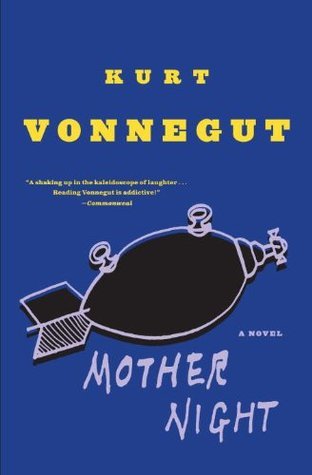Chapter 35: Forty Rubles Extra …
byIn Chapter 35 of Mother Night, Campbell finds himself confronted by Wirtanen, who reveals the deep layers of deception surrounding his relationship with Helga. Wirtanen explains that Helga’s true mission was to make Campbell fall in love with her, a revelation that stirs complex emotions in Campbell. He bitterly acknowledges the manipulation behind their connection, realizing that his love for her was never genuine but part of a larger plan orchestrated by external forces. This moment brings up further questions about Helga’s actions, specifically regarding a suitcase she carried containing Campbell’s collected works. These works, once cherished by Campbell as personal creations, were, in fact, used as tools for her mission, adding another layer of betrayal and disillusionment to his experience. This realization forces Campbell to confront the depth of the manipulation, making him question his own agency and the true nature of his relationships.
Wirtanen goes on to explain that Campbell’s manuscripts, once thought to be lost or destroyed, were actually not in Berlin during the fall of the city. Instead, they had been taken to Moscow, where they were found by Stepan Bodovskov. Bodovskov, a corporal who spoke fluent German, discovered Campbell’s writings almost by chance while scavenging in the ruins of post-war Berlin. Recognizing the value in these works, Bodovskov took it upon himself to translate Campbell’s poems, which quickly gained recognition and acclaim. This unexpected turn of events leaves Campbell both amazed and horrified, as his works, which he had never intended to be seen, are now celebrated by an audience he never imagined. The story of how his works were revived and transformed into a cultural phenomenon is both ironic and tragic, as Campbell grapples with the fact that his creations have been taken out of his hands and used in ways he never intended.
Wirtanen continues by discussing the success of Bodovskov’s adaptation of Campbell’s play The Goblet, which became a major hit in Russian theater. This play, which Campbell had written years before, is now compared to the classic comedy Charley’s Aunt, a comparison that surprises him. As Wirtanen describes the play’s success, Campbell is struck by the irony and absurdity of it all, especially since he never envisioned his work taking on such a life of its own. The play’s themes, centered around purity, love, and the pursuit of an unattainable ideal, seem almost prophetic in light of the current situation. The narrative, which once seemed like a personal exploration, now feels distant and out of his control, especially as it’s being celebrated by people like Stalin and other prominent figures in Russian society. This sudden acclaim for his work, a stark contrast to his previous experiences, forces Campbell to reflect on the impact of his creations and the unintended consequences of his artistic legacy.
As Wirtanen reveals more about the fate of Campbell’s writings, the protagonist learns that Bodovskov went on to publish Memoirs of a Monogamous Casanova, a controversial book based on Campbell’s personal experiences. This book, despite its controversial content, was published in Budapest and found success, even though it could not be published openly in Russia due to censorship. Cleverly bypassing these restrictions, the book became a coveted item for young couples, sparking curiosity and intrigue among those who came across it. This underground success highlights the unintended cultural influence of Campbell’s work, showing how his personal life and writings have taken on a life of their own, far beyond his initial intentions. The irony of the book’s popularity, along with the illicit ways it was distributed, deepens Campbell’s sense of detachment from his own identity. He is left grappling with the complexity of fame, anonymity, and the consequences of being part of a system that has twisted his original intentions.
The chapter closes with Campbell reflecting on the absurdity of the situation, especially when he considers the illustrations that accompanied Memoirs of a Monogamous Casanova. These images, which were meant to add another layer of depth to the book, only further complicate Campbell’s complex feelings about his artistic legacy. On the one hand, he is disturbed by the commercialization and distortion of his work, but on the other hand, he cannot deny the sense of pride that comes with the recognition, even if it is no longer in his control. The dark humor with which he reflects on his fame—fame that he never sought—serves as a poignant commentary on the unpredictable nature of artistic legacy and the ways in which the world can transform a creator’s work into something unrecognizable. This final reflection underscores the themes of loss and identity that run throughout the novel, illustrating how the protagonist’s personal and artistic journey has been hijacked by the very forces he once fought against.

